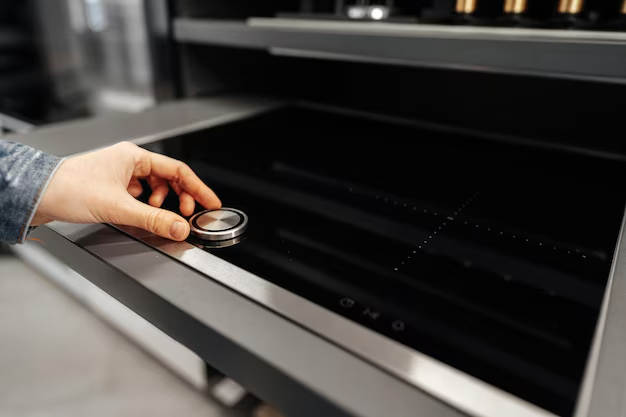Tackling the Mystery: Solving Water Leaks Inside Your Refrigerator
Have you ever opened your refrigerator and noticed a puddle forming inside? Water leaking inside your refrigerator can be quite a nuisance, causing frustration and potential damage to your appliance and food. Understanding the causes and figuring out how to fix this issue is crucial to maintain the efficiency and longevity of your fridge. This guide aims to provide you with practical solutions to address water leakage in your refrigerator, ensuring it stays dry and operates smoothly.
Common Causes of Water Leaks Inside Refrigerators
Understanding why your refrigerator is leaking water internally is the first step towards resolving the issue. Here are some of the usual suspects:
🛠️ Clogged Defrost Drain
A clogged defrost drain is a leading cause of water leaks inside refrigerators. Over time, debris and ice can block the drain hose, preventing melted water from flowing out, hence forming puddles inside.
Fixing a Clogged Defrost Drain
- Locate the drain hole. Usually found at the back of the fridge inside the freezer compartment.
- Clear the blockage. Use a long piece of wire or a specialized drain cleaning tool to remove debris.
- Flush with warm water. Pour warm water through the drain to ensure it's completely cleared.
🧊 Faulty Ice Maker
Ice maker issues can also contribute to water leaks. If the ice maker's water supply is improperly connected, it can lead to excess water accumulating inside the fridge.
Checking the Ice Maker Connection
- Inspect the supply line. Ensure that the supply line is properly connected and has no visible damage.
- Check for clogs or kinks. Straighten any kinks or remove any clogs that might be present.
💦 Improperly Sealed Door
When your refrigerator door doesn't seal correctly, warm air can enter, causing condensation which leads to water pooling inside the fridge.
Ensuring a Proper Seal
- Clean the gaskets. Use a damp cloth to wipe down the door gaskets to ensure they seal properly.
- Inspect for damage. Check for any cracks or deformations in the seals. Replace them if necessary.
🌡️ Inconsistent Temperature
Temperature fluctuations within your fridge can cause water to condense and drip, creating a leak.
Regulating the Internal Temperature
- Check the thermostat settings. Ensure the fridge is set to the manufacturer's recommended settings.
- Avoid overcrowding. Ensure proper air circulation for even cooling.
Addressing Water Accumulation on Fridge Shelves
Sometimes, water collects directly on the shelves rather than pooling at the bottom. Here's how to troubleshoot this specific scenario:
🤔 Identify the Source
- Food items with high moisture content may be the culprit, especially if their packaging is compromised.
- Check for any spilled liquids within the fridge that may have gone unnoticed.
🚫 Preventive Measures
- Organize food wisely. Keep items with high moisture content covered or sealed in containers.
- Use liners. Consider using shelf liners to contain any spills, making cleanup easier.
Advanced Fixes for Persistent Leaks
If basic troubleshooting doesn't resolve the issue, you might need more advanced interventions. Here are some additional steps you can take:
🔧 Adjusting Refrigerator Level
An uneven refrigerator can affect water drainage, leading to leaks.
- Use a level. Ensure the fridge is perfectly horizontal by adjusting the legs.
- Slight backward tilt. Allow the fridge to tilt slightly back to help with proper water drainage.
🥶 Check the Self-Defrost Feature
Malfunctioning defrost features can lead to excessive water creation that the drain cannot manage.
- Timer and heater check. Ensure that both the defrost timer and heater are working properly.
- Inspect the fan. Make sure the evaporator fan is not obstructed and is operational.
📞 When to Call a Professional
Sometimes, do-it-yourself isn’t enough. If the issue persists despite all efforts, it might be a good time to call a professional technician. Issues like refrigerant leaks or electrical problems require specialized skills and tools.
Keeping Your Refrigerator Dry: Proactive Tips
Regular maintenance can prevent water leaks and extend your refrigerator’s life. Here are some practical tips:
- 🧹 Regular cleaning. Ensure regular cleaning of the defrost drain and door gaskets.
- 📅 Scheduled inspections. Regularly inspect all connections and components for signs of wear or damage.
- ❄️ Proper defrosting. Manually defrost if necessary and avoid excessive frost build-up.
- 📏 Maintain proper airflow. Keep the vents clear from obstructions for effective air circulation.
Summary Table of Key Actions 🚀
| Problem | Solution |
|---|---|
| Clogged Defrost Drain | Clear and flush with warm water |
| Faulty Ice Maker Connection | Inspect and repair the water line connection |
| Improper Door Seal | Clean or replace gaskets |
| Inconsistent Temperature | Set correct temperature and avoid overcrowding |
| Uneven Alignment | Adjust fridge level |
| Malfunctioning Defrost | Check timer and heater for proper function |
By understanding the causes and applying these recommended fixes, you can alleviate and prevent water leakage issues in your refrigerator. A dry and efficiently functioning fridge not only preserves food better but also saves energy in the long run.
Remember, while many fixes can be handled at home with basic tools and a little troubleshooting, persisting issues may need professional attention. Keep your refrigerator well-maintained, and it will continue to serve your household efficiently for years to come.
